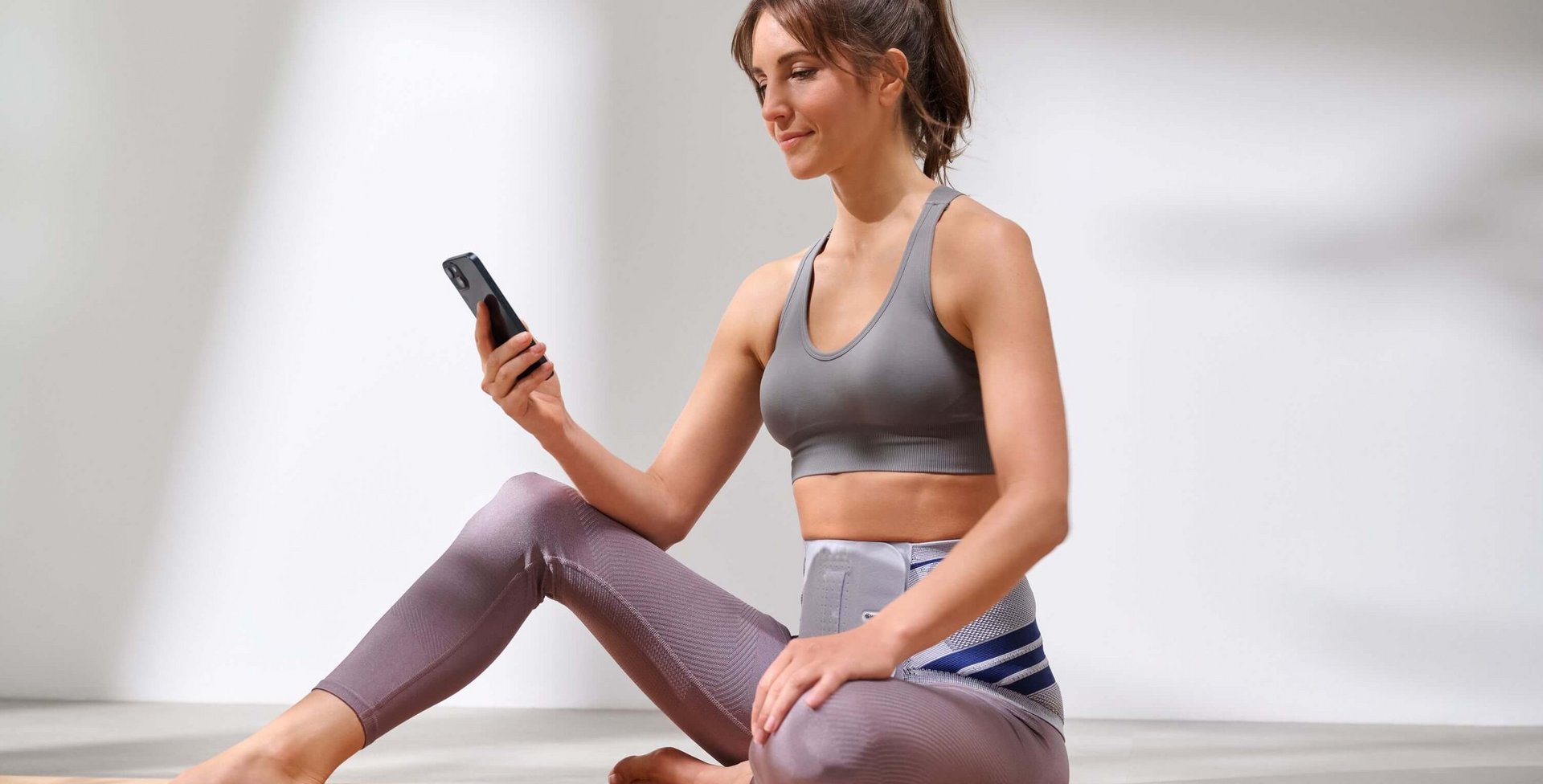
Back
How to support back and spine health
The human back supports the upper body and head, and is often used to carry loads such as shopping or a closet when movinghouse. It stabilizes us and makes us strong. It is not until something goes wrong and our back stops cooperating that most of us realize just how much we expect of our back and take it for granted. If the causes of the problems initially don’t seem obvious, physicians refer to this as “non-specific” back pain. It’s also possible, however, that conditions or injuries to the complex physical structures trigger pain. Find out here what indications there are associated with the back and spine, how they’re treated, and what you can do for your back health.
Non-specific back pain
Find the cause of your problems – we want to help you and explain to you how Bauerfeind’s back therapy can support your treatment. Furthermore, find out why a comprehensive approach is most promising in cases of low back pain.
What makes our spine so special
The spine is the structural load-bearing element of our bodies – the chassis, if you will – to which all other “functional elements” such as the head, arms, legs and rib cage are attached. If you look at it from the side, the spine is curved in a double S-shape. It’s bent forward in the cervical and lumbar vertebrae areas, while in the thoracic and coccyx areas, it curves backward. The 24 fixed vertebral bodies encase the spinal cord in the vertebral canal. The flexible intervertebral discs that connect the vertebral bodies function as shock absorbers in the spine. This means impacts during walking, running, and jumping can be absorbed. A complicated mechanism made up of ligaments and muscles keeps the spine taut and upright. Unfortunately, these finely tuned structures are prone to injuries.

Movement is the best prophylaxis
Strong back muscles are the best way to prevent back pain because the many layers of muscles support and relieve the spine and keep the back mobile. As a result, minor inappropriate mechanical stress – which nobody can completely avoid in everyday life – is not a problem.
By the way: those who want to actively strengthen their backs don’t have to achieve high levels of performance. It’s much more important to incorporate regular, targeted activity and to develop awareness for back-friendly behavior during everyday life.
Regular exercise also helps to relax – being active reduces mental stress which can also lead to a tense back and therefore trigger symptoms.
Protecting your back at the office
Because being active is so beneficial, the following applies to those who spend most of their working day sitting at a desk: getting up now and then and having a good stretch is just as crucial as frequently changing your sitting position so your muscles don’t feel ignored. Every movement has an effect and additionally relieves the intervertebral disks because it stimulates them and improves their nutrient supply. That’s because when there is a reduction in pressure, the “shock absorbers” between the vertebral bodies draw in nutrients from the neighboring tissues, and when pressure is applied, they release the used nutritive fluid.
How to do something beneficial for your back while working:
- It’s recommended that you change your posture at least three to four times an hour when you mainly work sitting down.
- In this respect, also make sure you have enough room to move – both when it comes to your desk chair and your legroom underneath the desk.
- Get up regularly to take short breaks with a little bit of action – a short walk or targeted back exercises are perfect for this.
- Those who perform physically strenuous tasks should take regular breaks from lifting and carrying for example.
How supports and orthoses help your back
Those who choose to fight back pain with exercise or need support during the work day can – in consultation with the treating physician – get help from orthopedic aids. Supports and orthoses for the back that provide stability, and therefore a sense of confidence, are helpful for example. Neuromuscular stabilization improves coordination and supports mobilization to strengthen the muscles. Equally, supports and orthoses prevent harmful movements.
A medical supply retailer near you won’t just provide expert advice about our products but will also show you how you put on your medical aid, adjust it, and tell you what to bear in mind when you wear it.
RETAILER SEARCH
Get advice on site!
Find a suitable retailer near you.



